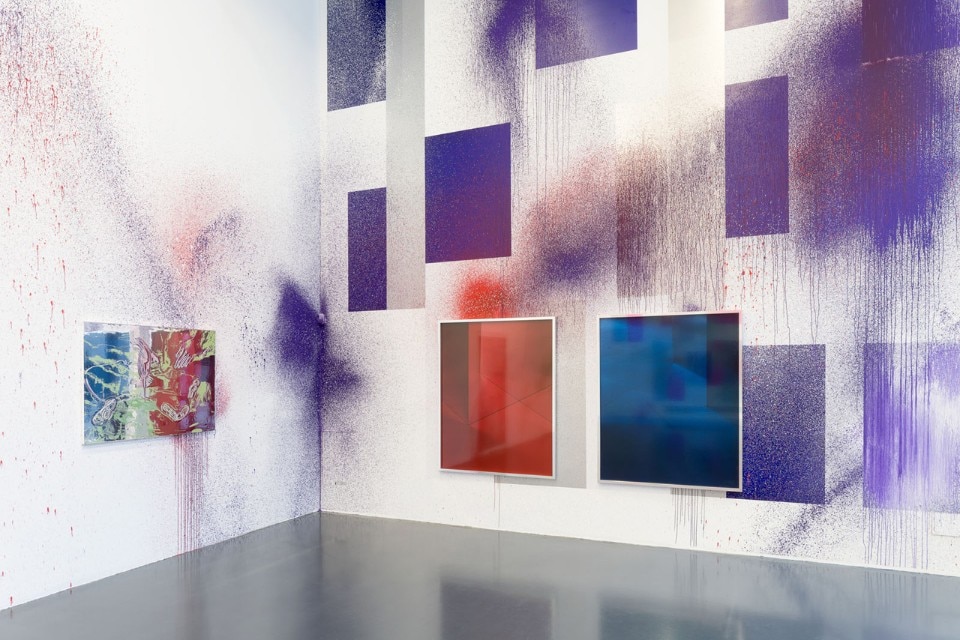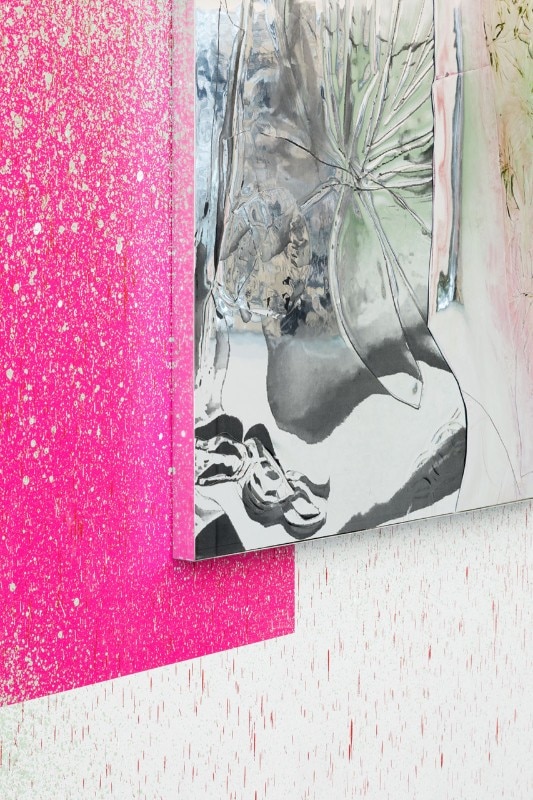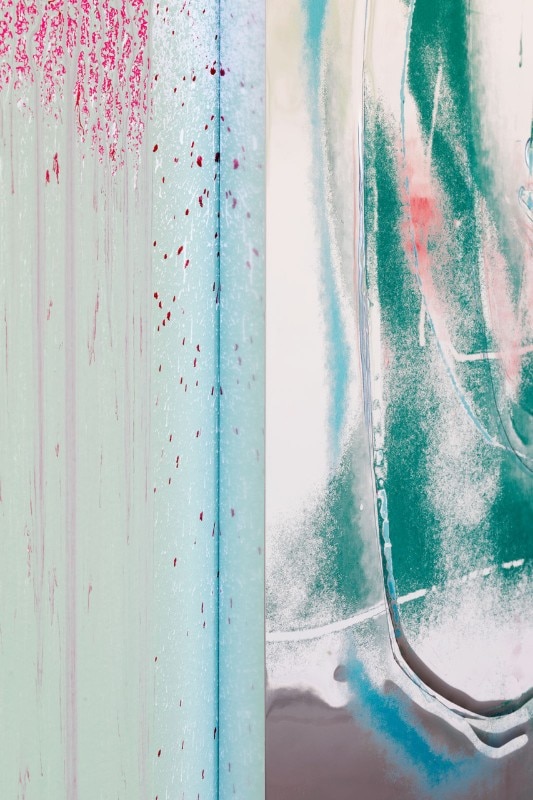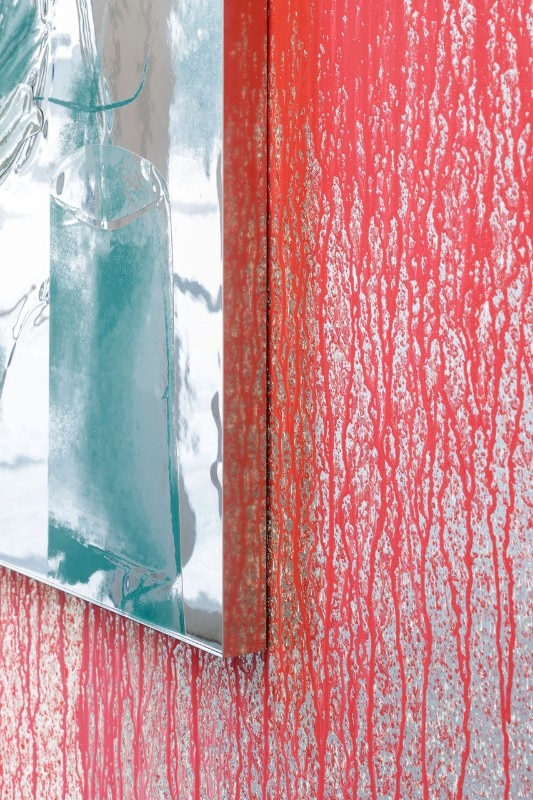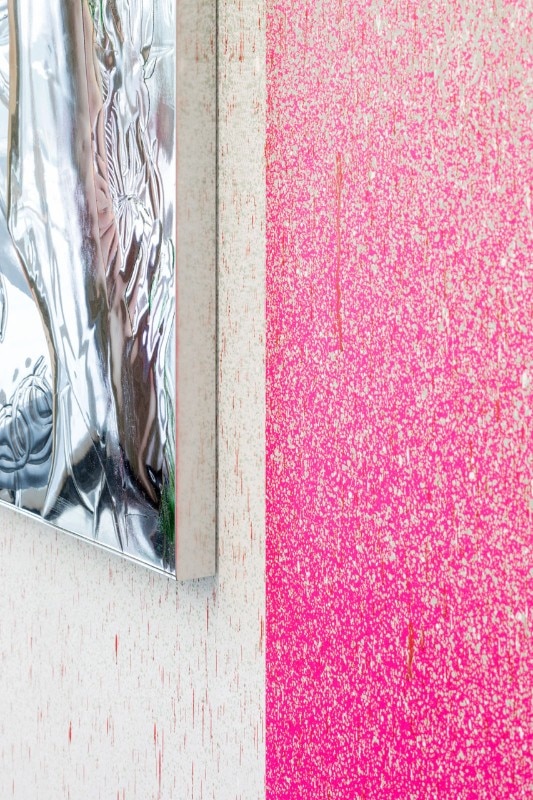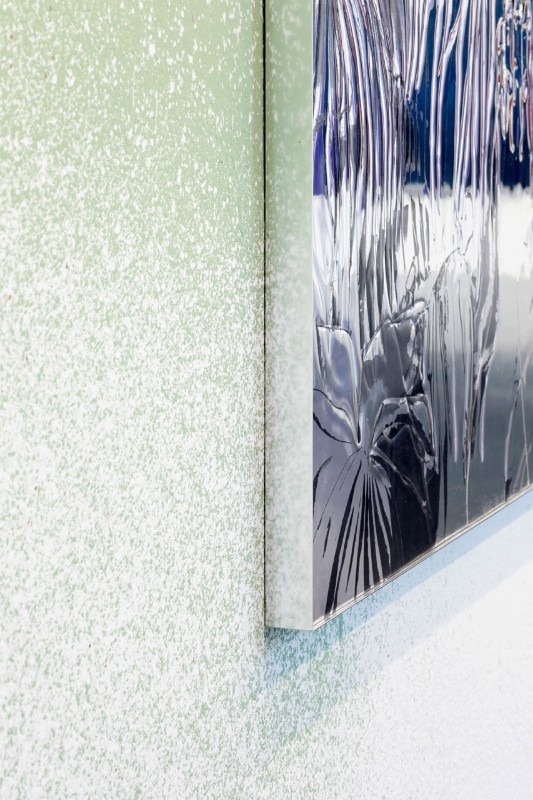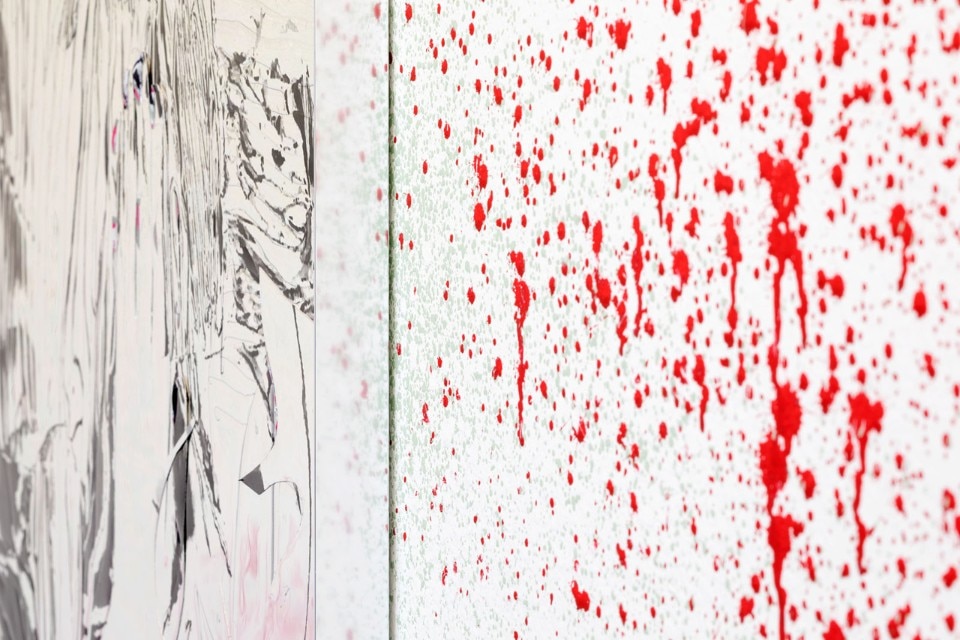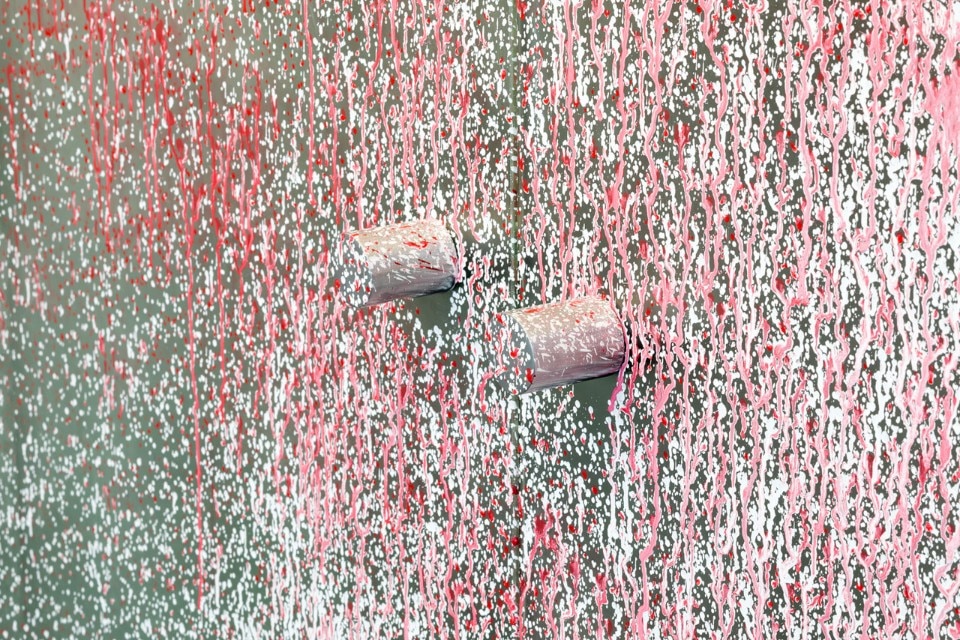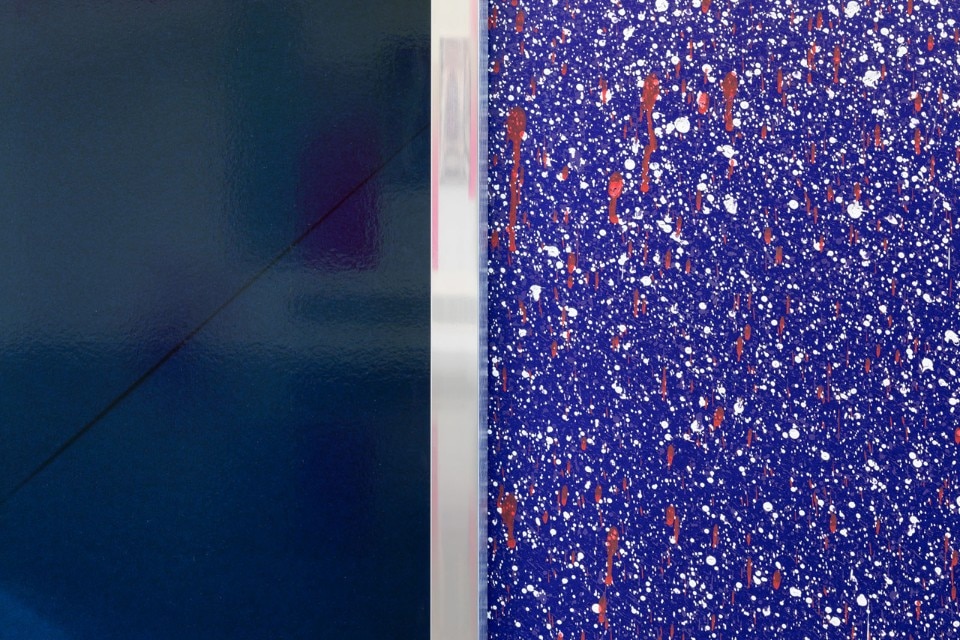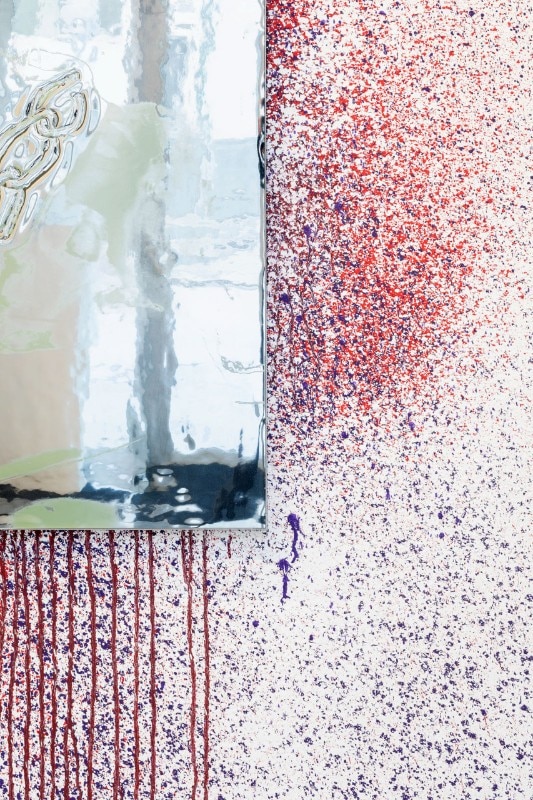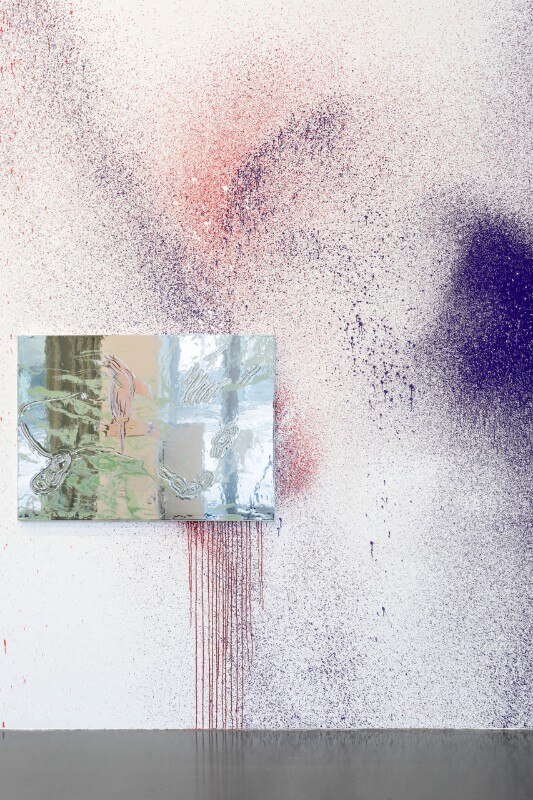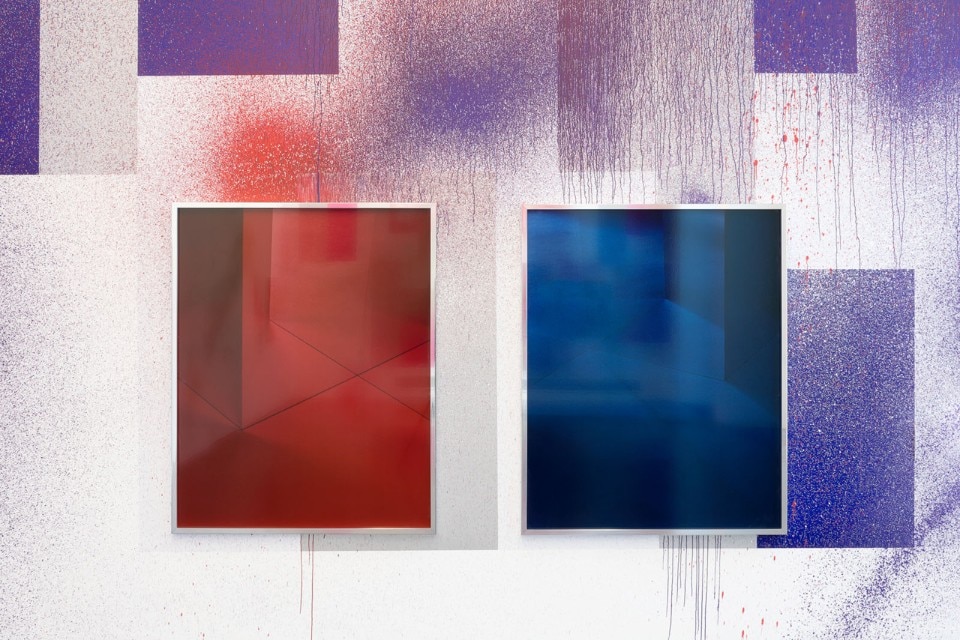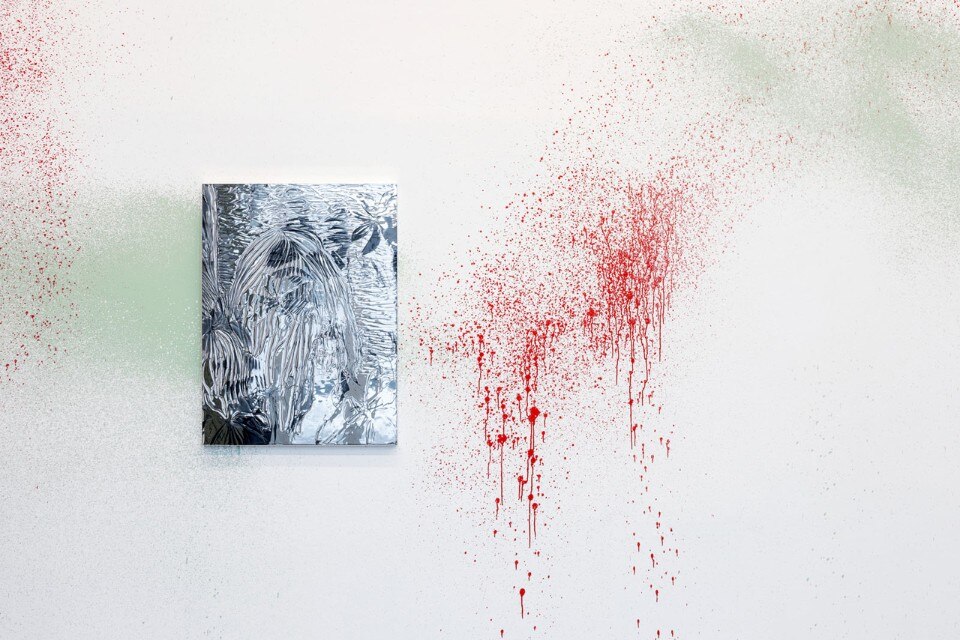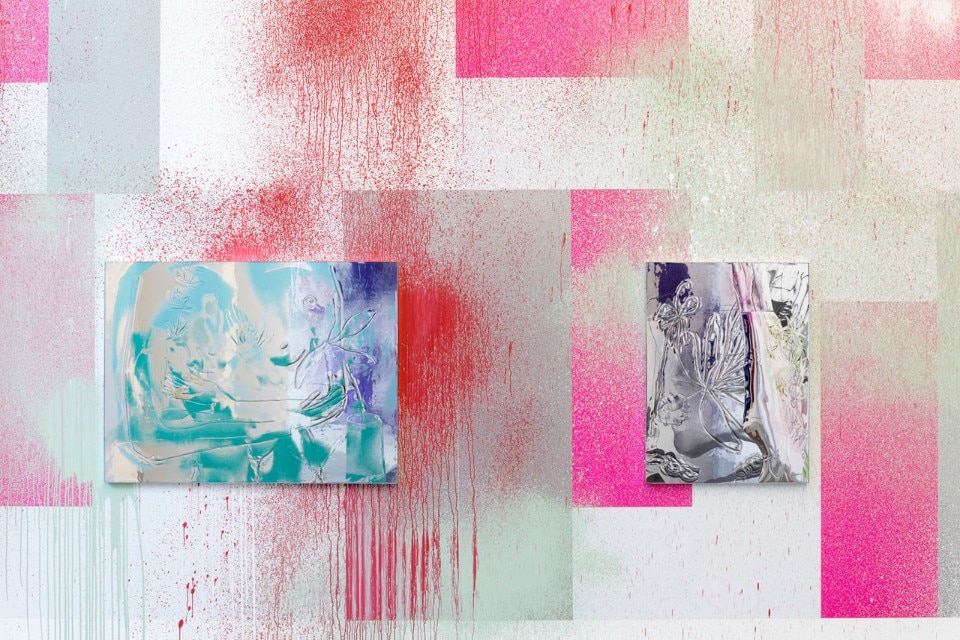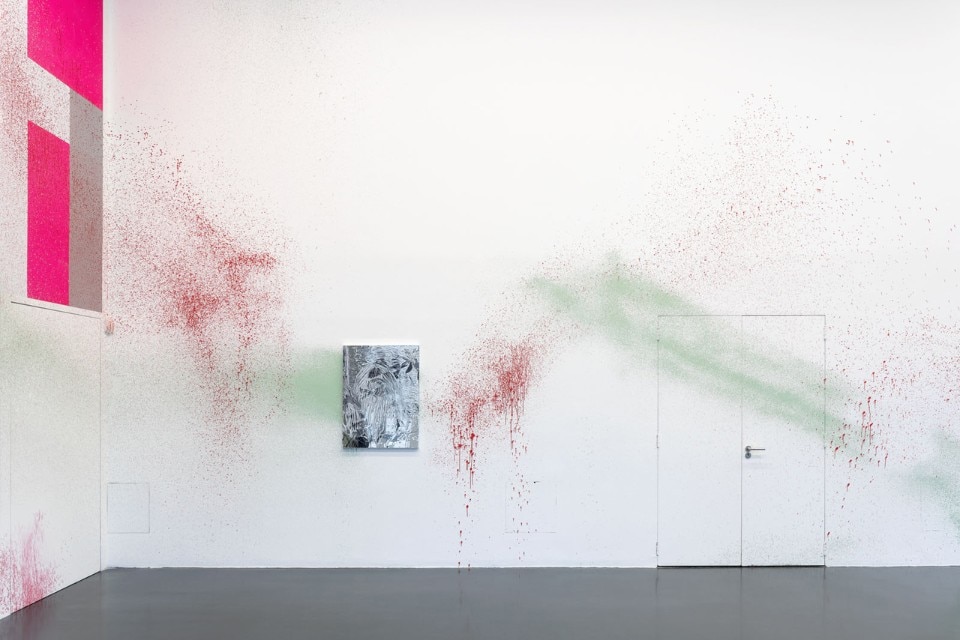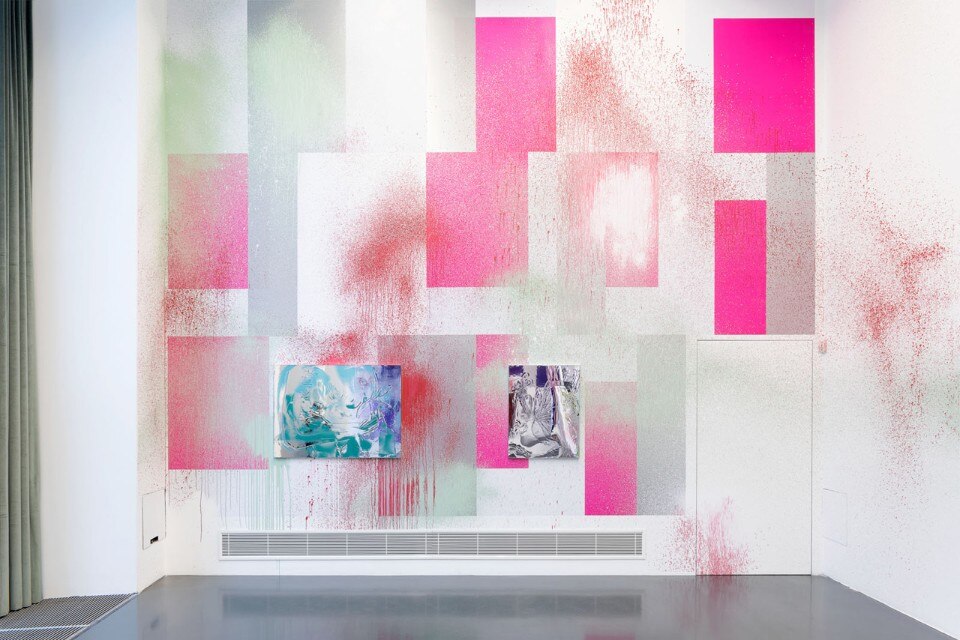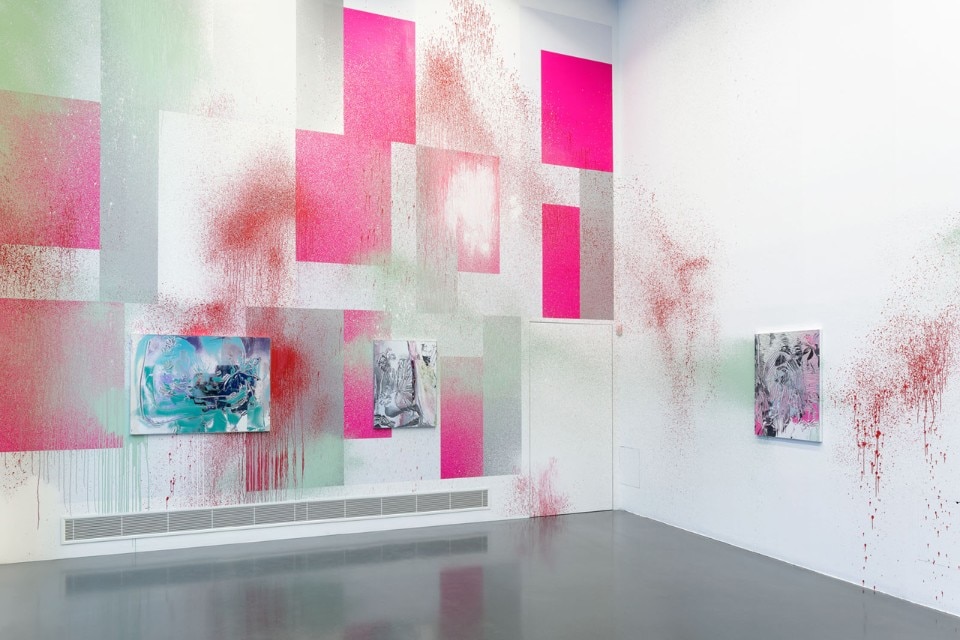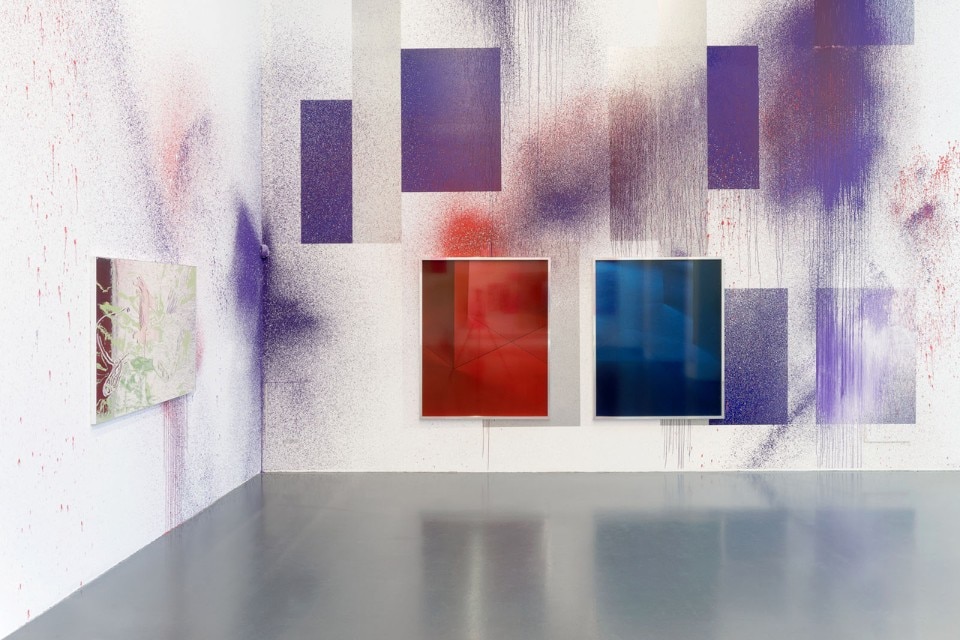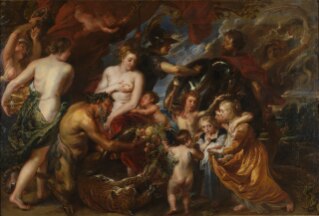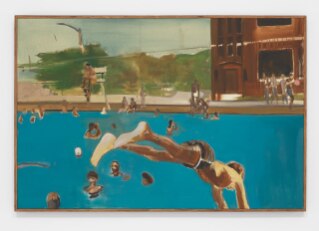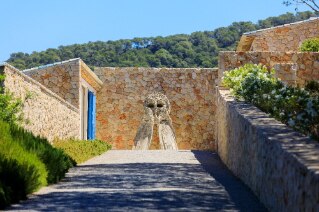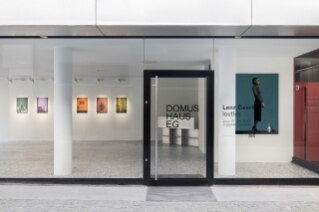The effect is anything but architectural; you might say it destructures the space, or with a bit of hyperbole, you could say it's disorienting. Paint-splattered walls set the stage for the decomposition of shape due to the presence of a certain reflective thermoplastic material whose surface creates images to immediately shatter them. Everything starts capsizing, but without any accompanying dizziness. There is more of the suggestion than the enactment of a loosening of spatial restrictions or personal ones in viewing. This is the basic idea behind the title "Capovolto" (translated as "Overturned") proposed by Manon Wertenbroek (Lausanne, 1991, now living in Paris) for this show at the Istituto Svizzero on Via del Vecchio Politecnico in Milan, where it is housed in architecture of the non-disorienting type. The two-person exhibition features Shirana Shahbazi (Tehran, 1974) as Wertenbroek's counterpart. Shahbazi presents two wall paintings and two monochromatic C-prints.
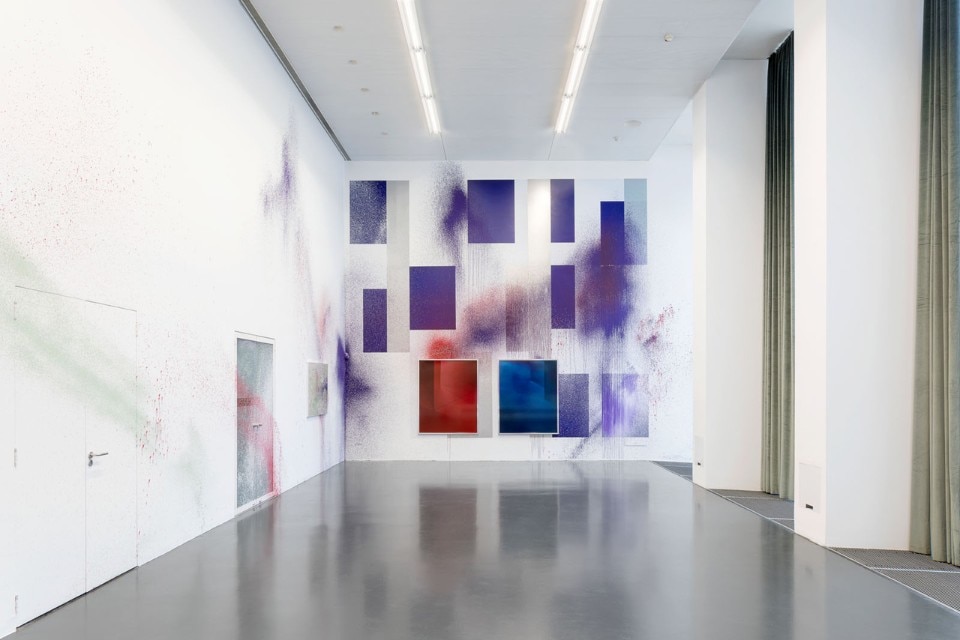
 View gallery
View gallery
Both women are photographers, although much like a shrunken sweater felted by hot water, the term proves too narrow and restrictive. Wertenbroek has a bent for portraits and for everything related to attachment, emotionality and interaction between individuals. Shahbazi is an experienced artist with a taste for the calm waters of the classic genres in art history – the portrait, the still life and the landscape, which she often elaborates on an architectural scale. In both lines of work, we see a string of semi-concealed references to Western pictorial traditions. The use of colour is seductive and brash. The visual language is borrowed from commercial photography – maniacal attention to detail, models with perfect make-up and outfits, suffused studio lighting – giving the permanent doubt that what we are seeing is not really what we are seeing.
In Shahbazi the use of colour is seductive and brash. The visual language is borrowed from commercial photography.
In the work of both artists, the photographic medium is shoved around to weaken its limitations. Abstraction imposes upon representation without being souped up by digital manipulation. For Tandem Violet (2014), the first piece she ever made, Wertenbroek places her model (her brother) in a set crafted from snippets of coloured paper and sheets of plastic cut into shapes, a background that requires many hours of handling. This preparation precedes the shooting of the photograph instead of succeeding it, as happens these days with Photoshop or as we used to do for fun, pencilling in beards and moustaches on pictures of people. Shahbazi alternately photographs volumes and painted surfaces – organic and artificial, natural and constructed – placing everything on the same plane.
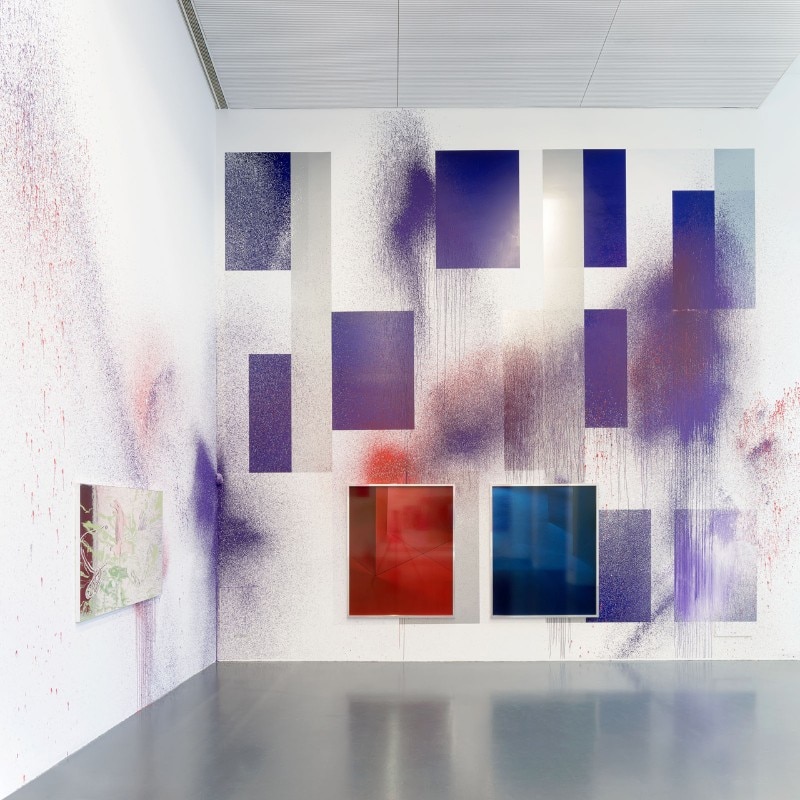
 View gallery
View gallery
Hanging in the entrance of the Istituto Svizzero, Shahbazi's two large prints Raum Rot and Raum Blau (“Red Room” and “Blue Room”, 2017) give the impression of being two corners of a room, or perhaps two symmetrically reflected views of the same corner. “In reality, they are leaning mirrors that form a rather small composition,” says Shahbazi, drawing a boxy cube in the air. She is wearing a pair of burgundy tights, the exact blend of the blue and red in the prints. I ask her what her first childhood image is. She thinks about it, raising her eyes to scan the wall in front of her, the one she sprayed with paint a few days ago using a hydrant. “The wall of the living room in the house where I grew up. It was hung with the small infantile creations my mother loved.”
With Wertenbroek, the mutual relation generated is between looking at the work and looking at yourself. In front of these mirrors, you catch yourself making grimaces.
Looking at Wertenbroek’s work from close up, you obtain a shattered image of yourself. Her four pieces Courtly Love, Amaryllis, Mixed Feelings Melody, and Dewdrops (all 2018) are PVC mirrors processed in a number of phases. Their size reflects a human figure from the head to the navel. In practice, she engraves a reflective sheet with a drawing, whose subject in the above-mentioned pieces is courtly love, a vanilla-scented flower and dew. She takes a picture of the drawing, prints it on a new sheet of PVC and silkscreens it with the colours of oxidised metal (black for silver, turquoise for copper and greenish yellow for bronze). Then she chisels it anew. “In Etruscan times, cosmetic mirrors were etched on the back with mythological scenes or women beautifying themselves. The work you see here is based on the idea of collapsing the two sides of the mirror.”
In other words, it is the reciprocity of looking and being looked at. This is what happens for example between the sacred image and the person venerating it, when the former is tucked into the frame of a bedroom mirror, a widespread peasant practice. With Wertenbroek, the mutual relation generated is between looking at the work and looking at yourself, without stressing the link to the psychoanalyst Jacques Lacan or Shintoism. In front of these mirrors, you catch yourself making grimaces to see how your eye sockets deform, while other ghostly figures float to the surface. I ask Wertenbroek for her first memory connected to photography. She does not hesitate: “When I was little, I used to try to capture on film the ghost that lived in the shower.”
- Exhibition title:
- “Capovolto”, Manon Wertenbroek e Shirana Shahbazi
- Opening dates:
- 7 February – 17 March 2018
- Venue:
- Istituto Svizzero di Milano
- Address:
- via del Vecchio Politecnico 3, Milan


